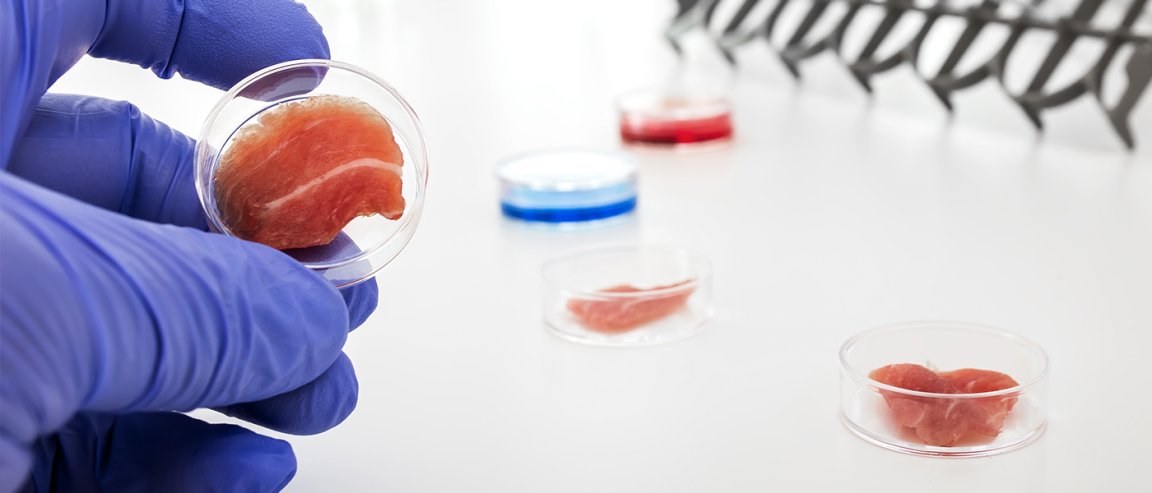
Finding Fault with Factory Farms
The technology behind lab-cultured meat products is rapidly advancing. It’s possible that we will start seeing these kinds of products being sold right alongside their traditionally farmed cousins. The advent of a more sustainable means of keeping meat on tables has shed new light on the contentious topic of the impact livestock farming has on the environment.

According to the Food and Agriculture Organization of the United Nations (FAO), twenty-six percent of the ice-free land on Earth is used for livestock feed production. Further, “[e]ach year 13 billion hectares (32.1 billion acres) of forest area are lost due to land conversion for agricultural uses as pastures or cropland, for both food and livestock feed crop production.” Livestock farming contributes to 14.5 percent of all anthropogenic (human caused) greenhouse gas emissions, meaning 7.1 gigatonnes of carbon dioxide are released from the practice. The National Institute of Environmental Health Science estimates that by 2050 livestock populations are expected to double.
The environmental impact of traditional meat production is not the only downside of the practice. There are also very serious health concerns involved for both animals and humans. Animals on factory farms are often confined in poor, overcrowded, conditions and are unable to engage in natural behavior. This can lead to illness, physical alterations, or even death.
Further, in order to make our meat cheaper by fighting disease and making the animals grow faster, they will be given antibiotic growth promoters. This wanton distribution of powerful antibiotics is one of the leading causes of the rapid spread of drug-resistant bacteria, also known as superbugs. Recently, a superbug claimed its first victim in the U.S. This is an ongoing problem only set to get worse without significant changes.
Culture Shock
Lab-grown meat products could very well be a major part of that change. The cost of cultivating meat in a lab has dramatically decreased in the last few years. A team of Dutch scientists were able to grow a burger for a total cost of $330,000, and just a few months ago, a company out of the United States called Memphis Meats was able to serve up the world’s first lab-grown meatball for the cost of $18,000 per pound. This is of course nowhere near affordable for mass consumption. Both teams believe that the technology will continue to advance rapidly, allowing for products to show up in grocery stores and restaurants within a few years.
Instead of cultivating entire animals to harvest their meat, companies are able to simply take self-renewing stem cells from animals and cultivate those in a brewery-like atmosphere. Memphis Meats even states that their facilities will be open to the public much like a beer brewery.
Better Between the Buns
The conditions of the labs are also an important factor to show the greater benefits of lab-grown meats over conventional animal proteins. The meats are grown in a sterile environment, thus eliminating the need for antibiotics. Also, the conditions do not allow for the growth of dangerous bacteria such as salmonella or e.coli, making the product even safer.
Another aspect of human health that can come from cultured meat is the removal or reduction of saturated fats. Professor Mark Post from Maastricht University was involved in the cultivation of that very first lab-grown burger. He stated, “Stem cells are, in principle, capable of making omega-3 fatty acids. If we can tap into that machinery of the cell, then we could make healthier hamburgers.” Since fats are a critical component contributing to meat flavor, texture, and other desirable characteristics such as juiciness, it is important that cultivated meats retain fat content. However, omega-3 fatty acids are much healthier than saturated fats. Still, a balance must be struck as too much omega-3 can cause the meat to have a fishy taste.
According to Memphis Meats CEO and co-founder, Uma Valeit, the process by which the company creates its product is responsible for 90 percent fewer emissions. Since growing cells doesn’t require acres upon acres of land, the land used to shelter and graze livestock can be reclaimed by nature, at least ideally.